BORDERLAND
CROATIA
Croatia is Border Land. The country lays on the geographic margin between central Europe and the Balkans, between the Adriatic and the Continent. Its very shape speaks of the divide. There is nothing compact, square or secure. Instead it curves around Bosnia and Herzegovina in a narrow arc, like a crescent moon or a boomerang.
THE NEW CROATIA
M
orning comes early far off the coast of Croatia, on an island in the heart of the national park called Kornati. We wake up in the shade of a 6th century church and a pair of olive trees. Above the simple wooden door, in black script, is painted the motto Kraljice Mora Moliz Za Nas. “Queen Mother of the Sea, Pray for Us.”
Sitting on a stone bench, rubbing sleep from my eyes, waiting for coffee water to boil, I look out over the unique waterborne park. Comprised of140 islands in a 21-mile-by-9-miles rectangle, 20 miles off the mainland, each is brown and barren, stripped of trees by the Venetians to build Venice, each island is criss-crossed by long stonewalls divvying them into neat geographic parcels. It seems a bit ironic that this man-stripped land is one of the country’s most beautiful national parks. But stark as the islands are, they are beautiful and perhaps emblematic of the long struggles that have riven this landscape for centuries. Man has been formally ensconced here for at least 2,000 years; sheep have been here as long and a pair of wooly critters trot by as I write.
This is border land. Croatia lies on the geographical border between Central Europe and the Balkans and between the Mediterranean world and continental Europe. It lies also on a cultural and religious border, between Eastern, Byzantine Christendom and the Latin West. The very shape of the country reinforces the impression of a frontier. There is nothing compact, square or secure. Instead, the country curves around Bosnia in a narrow arc, in the shape of a crescent moon, or a boomerang. At no point is the country more than a few hundred miles wide; at most points it is much less. In the far south, both north and south of Dubrovnik, it is only a few miles wide, hemmed in by the Adriatic on one side and the mountains of Bosnia on the other. The fate of any border land is always to be precarious and to move frequently, shrinking and expanding across the generations.
When I told my friends that I was off to paddle the islands of Croatia, to a one the response was, What islands? Well …there are 1,246 of them to be exact, 66 inhabited, many smaller than three acres. It is the largest archipelago in the Mediterranean (after Greece), and looks like a barer, wonderfully shattered, more sun-drenched Maine. The islands are karst, the tips of mountains left over from the end of the last glaciers when the seas rose by 300 feet and tectonic movements separated them from the mainland. Sea kayaking here may just be the best in Europe, on the bluest water on the planet (just ask the astronauts), with an island, or two or three, always within sight.
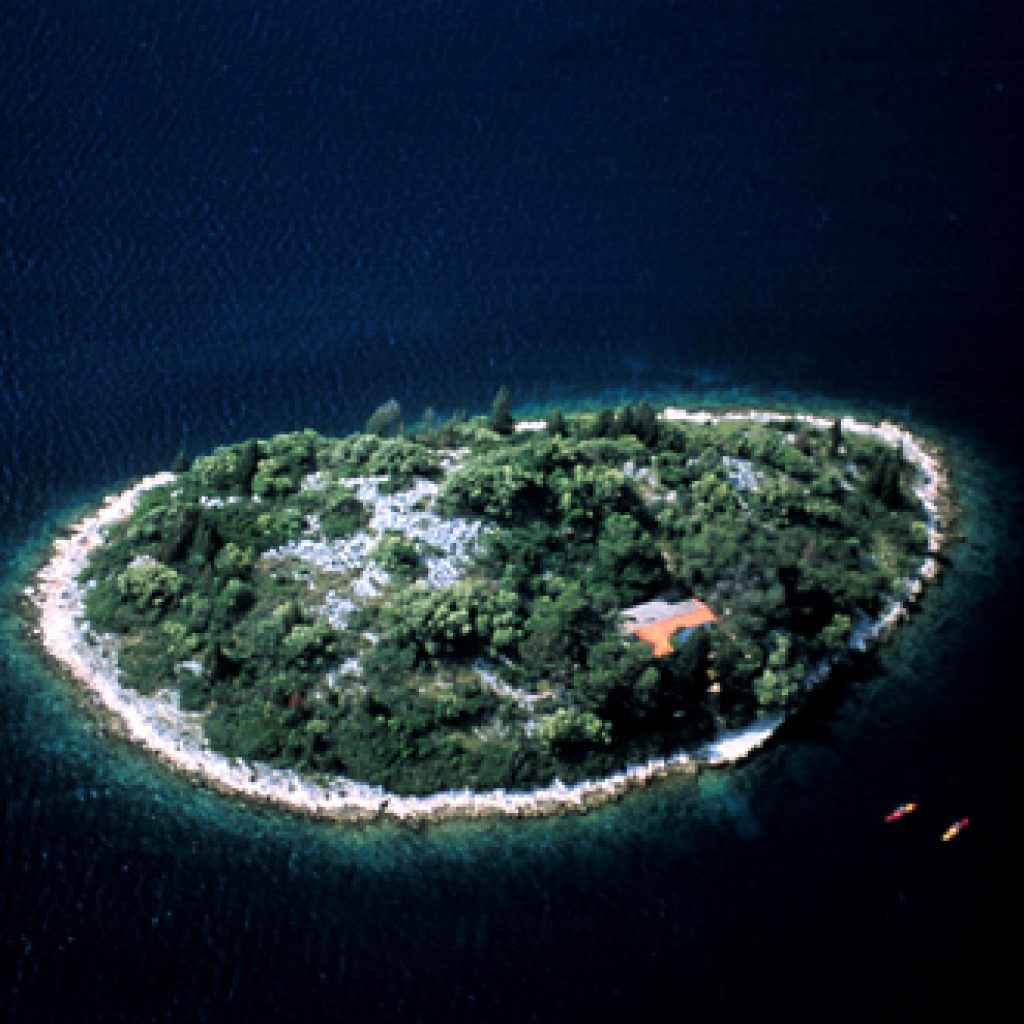
It is late May and we had pushed off from the big city of Zadar five days before. The days since had been long, under a super-hot sun, on nearly windless seas, the kind of where the only sounds are the drip of water off the end of your paddle as it rises up and out of the glassy sea, mixed with the occasional crick crick crick of the rudder, the ping of droplets of sweat hitting your PFD and the occasional curse aimed at the relentless sun.
Yesterday we’d passed the southern tip of the 30-mile long Dugi Otok (Long Island) and a dozen small, unpopulated islands of rocky short hills covered with scrub, thorns and sharp rocks. After breakfast this day we would continue past Levrnaka, Borovnik and Balun, cutting from protected bays out onto the open sea. Beyond stretched island after island, as far as the eye could see. War behind, for the moment, from where I sit it feels like Croatia is back …trying hard to regain a well-deserved reputation for tranquility, beauty and a welcoming populace… yet it also seems a place where surprise could be just around any corner.
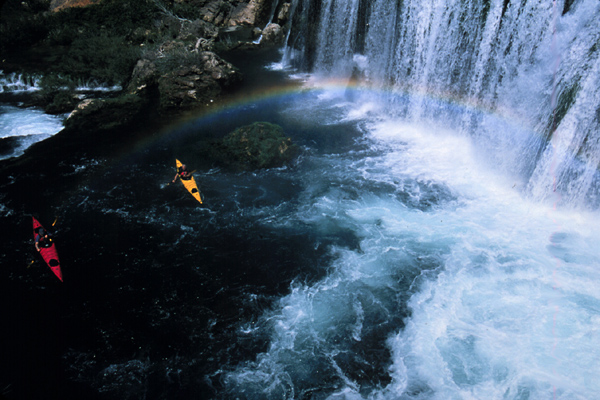
The second question my friends asked me as I packed for five weeks of sea kayaking down the Dalmatian coast was, Aren’t they still at war?
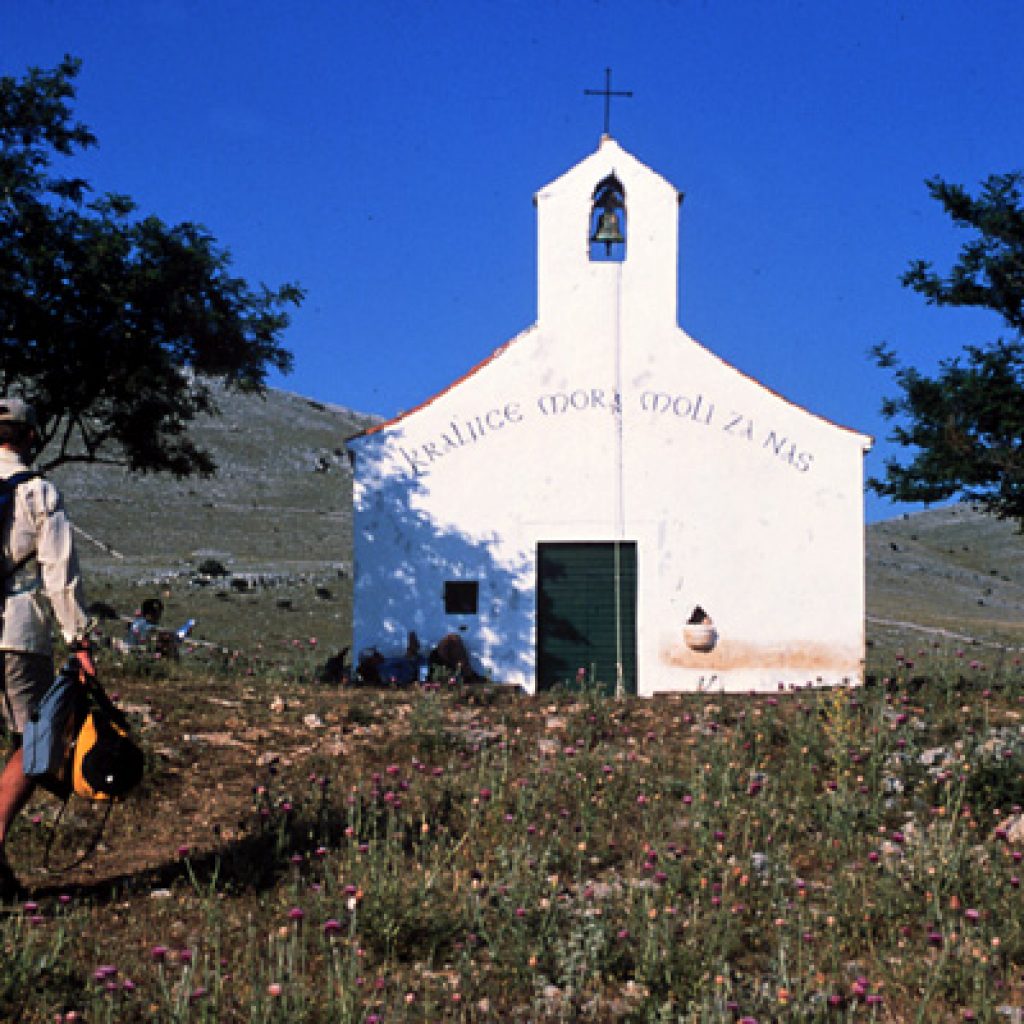
Fighting has been over for roughly ten years. But when an outsider asks for a simple explanation of what happened here in the former Yugoslavia in the late Eighties and early Nineties, to a one – Croat or Bosnian, Serb, Christian or Muslim – shakes their head and says, “It is very complicated.”
In short … post-Cold War the republics of Yugoslavia yearned for independence. What had begun in 1991 were wars of dissolution; then — in Bosnia, Herzegovina and Croatia–they became something more, conflicts demanding further definition, involving racism and genocide. Over two-thirds of the more than 200,000 killed during fighting (which mostly ended in 1995) were civilians or unarmed at the time of their deaths by artillery fire, sniping or outright execution. Some were caught at a military objective but most were targeted simply because their ethnic identity made them seem a present or future danger to other ethnic groups. The war left behind brutal scars, physical and mental, and coined the now all-too-familiar phrase “ethnic cleansing
Despite that very recent history, Croatia is definitely back as a tourist mecca. Europeans long flocked to the former Yugoslavia in the summer when the Mediterranean sun turns its walled-cities and pebbled beaches into heaven-on-earth. Today the Euros have returned, accompanied by the rest of the world. During the summer months 8 million tourists visit the coastline and ultra-hip towns like Hvar, Korcula and Dubrovnik are booming. For understandable reasons. The coastal people are a tall and elegant race; model-like beauties are seemingly everywhere. The wine is excellent, olives freshly picked. In the summertime the coast is host to yachts of the rich (last summer it was most-famously Tom Cruise) and Gerard Depardieu owns the hottest bar on the hottest island, Hvar. And adventure sports are catching on everywhere – from rock climbing overhanging the sea to whitewater rafting on big, clear rivers. A half-dozen sea kayak outfitters, most started in just the past year or two, organize trips ranging from one-day to one-week.
Our sea kayak adventure starts on one of those wide, clear rivers – the Zrmanja — which will carry us to the Adriatic. I have invited my old Croatian friend Zeljko Kelemen to join us. He is the father of adventure travel in Croatia; his Huck Finn Adventure Travel is the leader in whitewater rafting and sea kayak trips. He’s watched his country transition from communism to democracy, endured war (where his rafts were seized by varying armies to shuttle wounded across the rivers) and emerged with a fast-growing business. We had met in 1997, and spent a cold New Year’s exploring then-frozen rivers. Since then, tourism has ramped up and he is racing to keep up, including fighting something new for him: Competition! “For a long, long time I was the only one promoting rafting and kayaking here; now it seems everyone with a van is an outfitter,” he jokes. But he’s not complaining; even when we are on the river his cell phone is ringing non-stop with new bookings … concerning us a bit when he pauses to answer one as he back-paddles above a 40-foot waterfall.
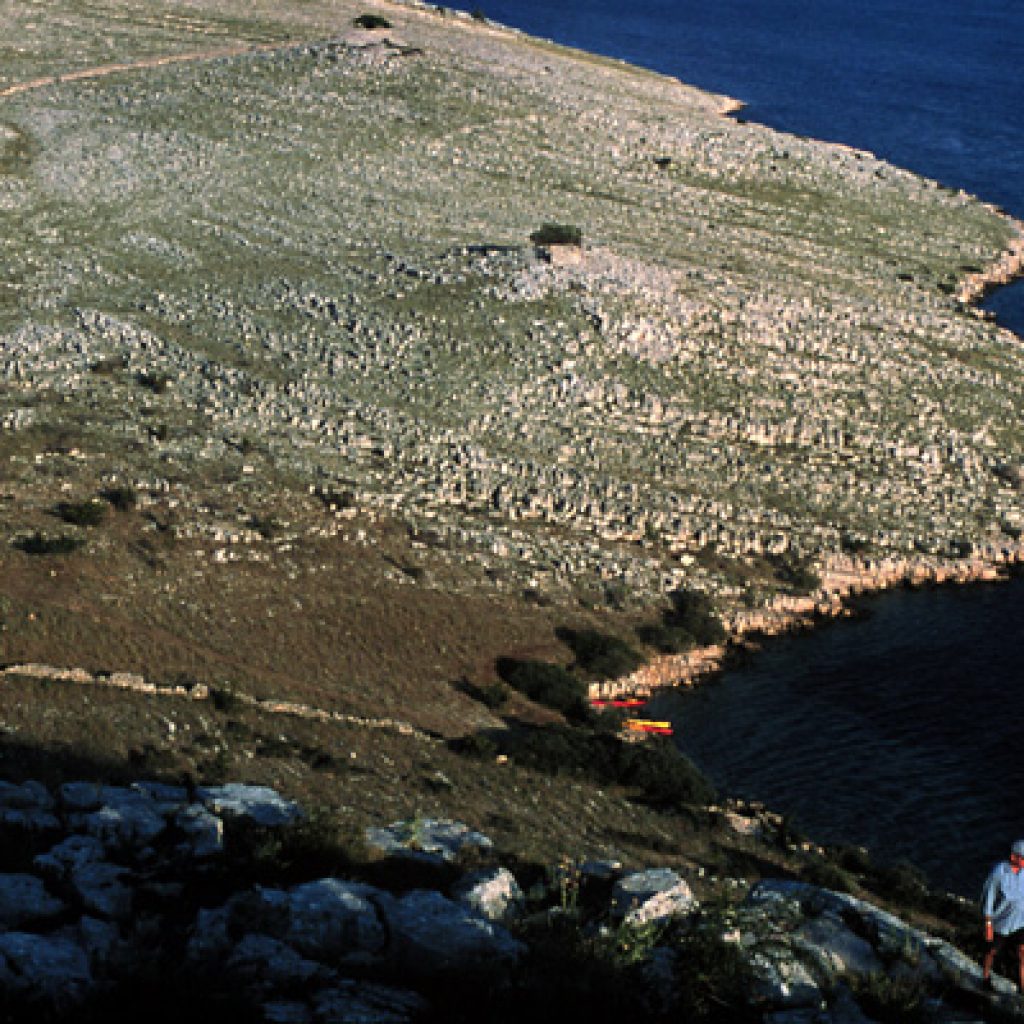
his adventure is another expedition in my ongoing OCEANS 8 project. Begun in 1999, since then my teams and I have been literally sea kayaking around the world, one continent at a time, looking at the lives of people who live and depend on the sea, as well as the health of the world’s oceans (previous ADVENTURE stories have chronicled our Aleutian Island, Vietnam, Tuamotu and Altiplano expeditions, all supported by National Geographic’s Expeditions Council.)
Along with my two longtime running mates – ever-ebullient, Colorado-based photographer Peter McBride and British-born whitewater kayak champ and videographer Alex Nicks – our plan was to kayak nearly 400 miles, from Zadar to Dubrovnik, staying almost entirely in the islands. A fourth kayak would be filled with a rotating crew of locals. It would take us a little more than five weeks and introduce us to a fascinating land, and an incredible cross-section of fishermen and tourists, aqua culturists and historians, Serbs, Croats, Muslims and more. Along the way we would run into other kayakers – solo boaters, groups organized through commercial outfitters, even a sailboat or two carrying kayaks and passengers among the varied islands.
The Zrmanja is marked by shallow rapids and one big drop. It has certainly never hosted big sea kayaks like ours, for reasons made obvious as we line them with some difficulty over that 40-foot, horseshoe waterfall. Accomplished, the rest of the day is spent running small rapids and pushing the boats around smaller falls, until taking them out for good above a metal bridge, near a weathered shack boasting a sign that reads “Fast Food.”
Another sign on the wall is initially disconcerting: A hatchet with a slash through it. As in “No Hatchets!” Zeljko explains that the Croatian word for worrying sounds a lot like the word for ax. Thus, this is a worry-free zone!
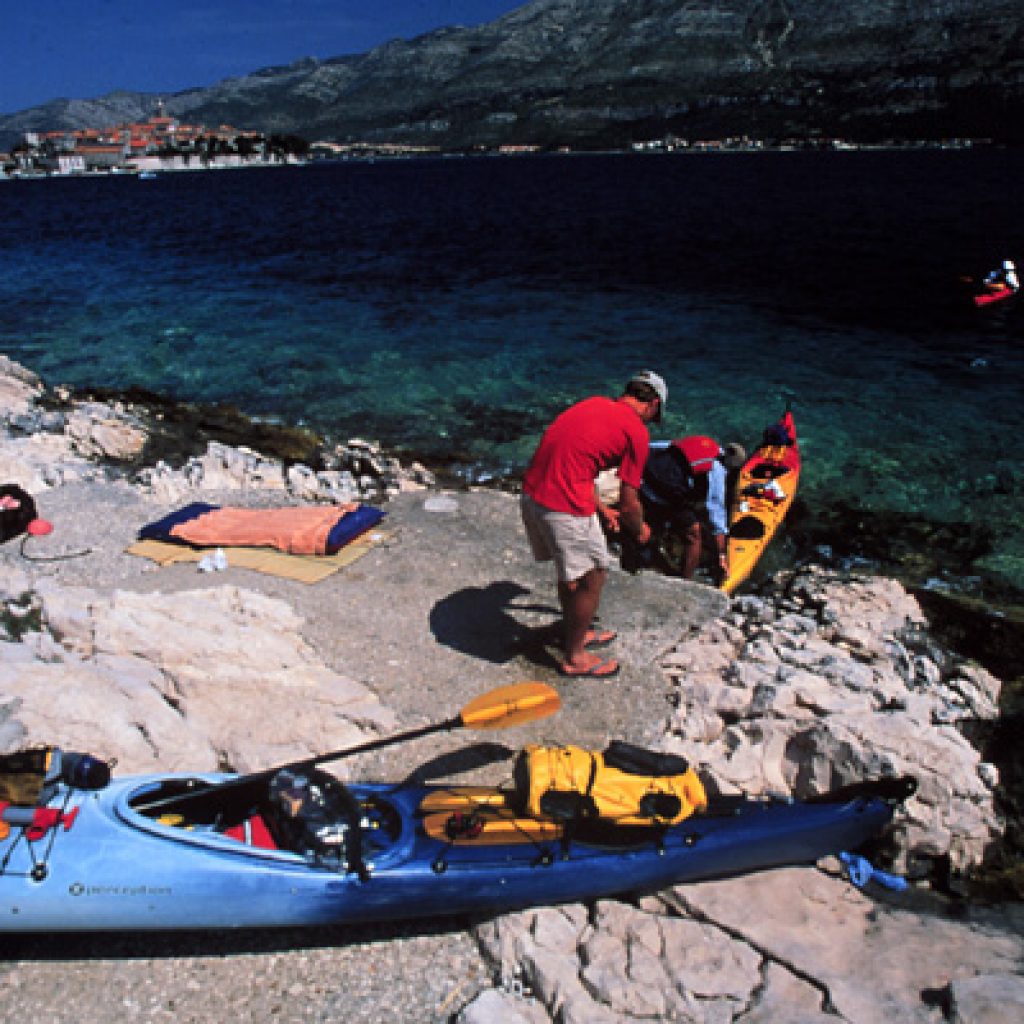
One week out, we are paddling the glassy sea on the exposed, ocean side of the unpopulated Rasip island. By mid-afternoon we are desperate to hide from the sun, desirous of any hint of shade. Spying a slight overhang at the base of a 200-foot tall wall, I head for the slash of shade. And spot something floating next to the wall. At first I think it is a pole from a sailboat, used to hook buoys, or maybe a fishing rod. Closer inspection reveals it is a shiny and sophisticated spear gun, highly illegal inside the park boundaries.
Tugging as hard as we can, trying to free it and not to tip over, its spear is firmly stuck in something below the surface. Cutting the line, the young Croatian paddler traveling with us, Domagoj Pacac, sticks the gun into his cockpit, snugging his spray skirt tight. “It would be a drag to be caught with it,” he says, but it seems too valuable a toy to leave behind.
“I wonder what it was stuck to?” Pete wonders as we paddle away.
“Either a very big fish … or a body,” jokes Alex, morbidly.
Sure enough, within 10 minutes we paddle past both a police boat and a park ranger’s boat … the first we’d seen. Dom is lucky he hadn’t just bungeed the gun to his deck.
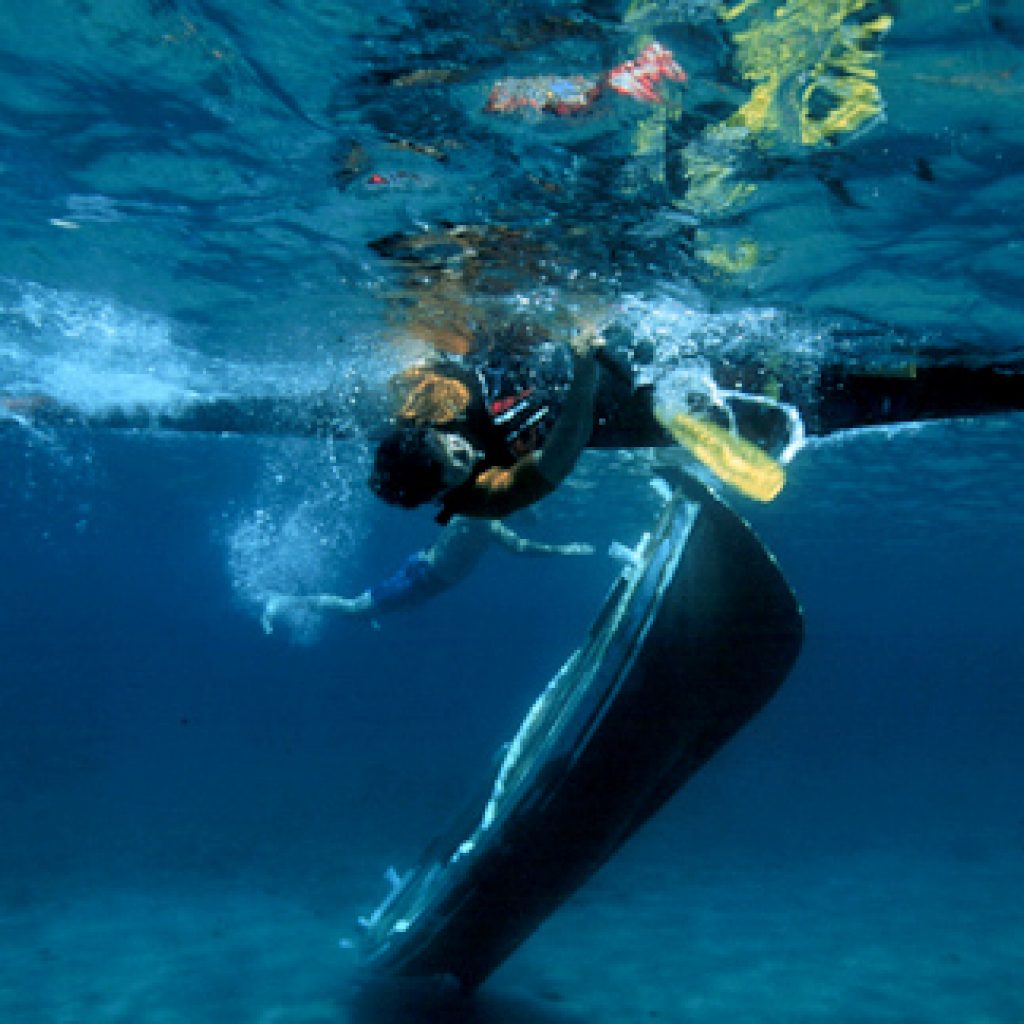
e are heading for a small fishing port at Piskera. Hot and fatigued when we arrive, we are disappointed that what the guide book calls the ‘liveliest’ fishing port in the Kornatis turns out to be a couple barely-open restaurants and an all-too-modern marina.
Running our kayaks ashore on a pebble beach we sit in the shade of one of the restaurants, rousing its owner from a siesta. Nothing cold to drink, he apologizes, since there is no electricity. Instead we page through a week-old newspaper, happy to be out of the sun. And then we see the park ranger boat pull up to the dock! Off jumps a black haired ranger in a uniform of white polo shirt and blue shorts, Vito stitched to his chest. Without prompting, Dom volunteers that we’d found a spear gun.
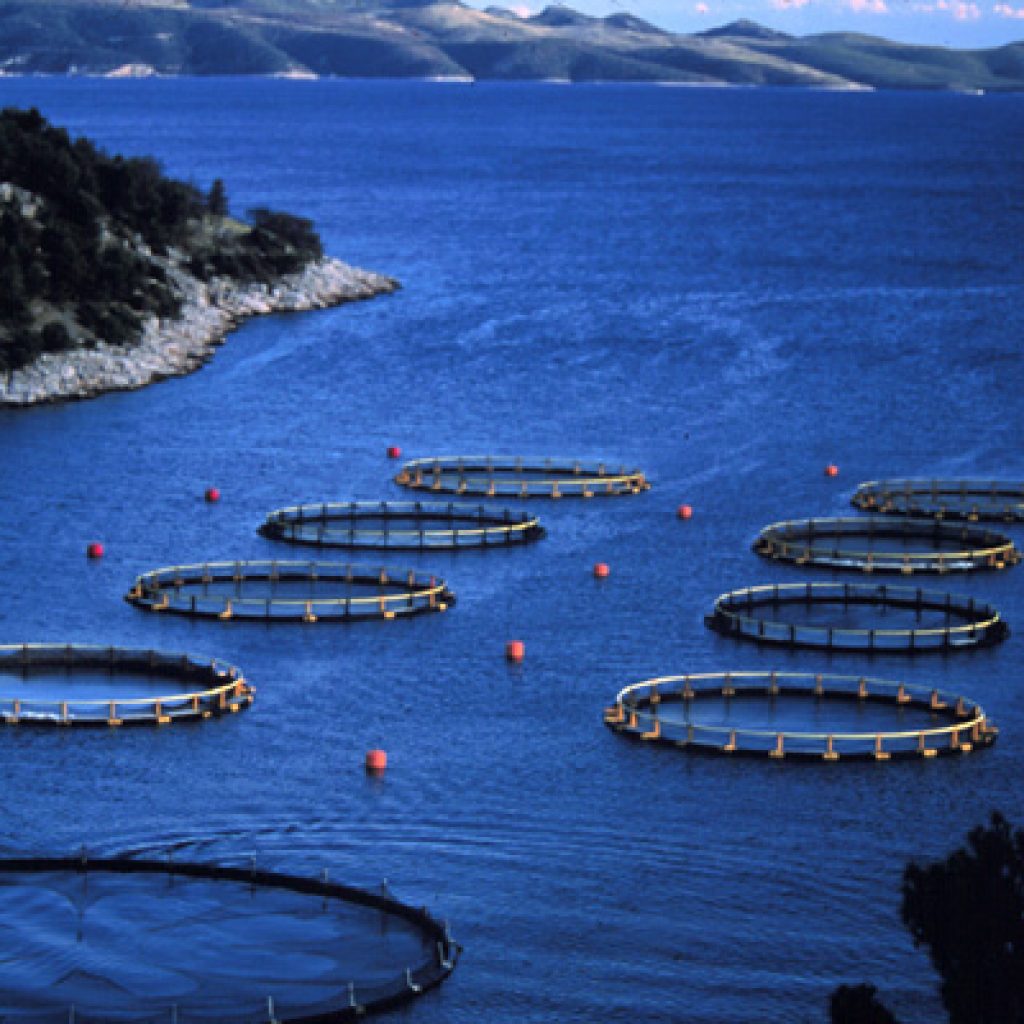
Which, oddly, is good news to him. He’s come to the restaurant to inform its owner that the spear gun’s owner — a good friend and marina employee — has apparently drowned while diving. We have found his spear gun.
The restaurant man, dressed just in a pair of basketball shorts, breaks down, moaning. Not wanting to intrude on his grief, we climb back into our kayaks and paddle to the marina, where the employees are gathered on the dock, hearing the same news, gently weeping under the hot Adriatic sun, in shock
“Shitty way to go,” we agree. “Drowning, while doing something illegal.”
As we paddle away, towards a less-grieving beach a few miles south, Dom ponders out loud. ” It really makes me want to know what was at the end of that spear ….”
“What I tell everyone about the war – my own countrymen, people from other countries, especially the warriors (soldiers)– is that you have to put it in the past. Sometimes my friends complain if they see Serbians coming to our town. But I tell them, ‘Be grateful!’ They are coming to OUR towns. It could have easily been the other way around.”
am sitting with my oldest Croatian friend, Stipe Bozic, under a beer umbrella at an elegant café on the riva in Split. It is a bright sunshiny afternoon and we’ve just had a huge lunch of shrimps and shellfish. Dressed in a Quiksilver shirt, Tevas and white jeans, he is an exceptionally fit 52 and the country’s best-known climber (the first Croat to stand on top of Everest, the first to climb all Seven Summits). He is also a renowned adventure filmmaker, and works for Croatia’s number one television station. Every year he is encouraged to run for political office, even president.
We met in a tent in Antarctica in 1995; he and three friends climbed Mt. Vinson (by a new route, in 24 hours) and proceeded to make another dozen Antarctic firsts. Though snowbound by an unusually wet storm, they greeted each day like it was a first. This was a couple years after the fighting had ended in their homeland and they exuded a newfound will to live.
His war stories are straight out of a Slavic version of the gang that couldn’t shoot straight, including tales of cannons mounted on either side of Split’s port – 200 yards from where we are having lunch –trying in vain to shoot at Yugoslav Navy warships just off the port.
“Of course, we couldn’t hit a thing,” he smiles.
They did manage to rig a bomb onto a remote-controlled toy boat and send it out towards the ships. “It went straight for awhile,” he laughs, imitating the sound of the little boat whining its way out. “But at some point it went off target, then started going around in tighter and tighter circles and then just disappeared. Sank I imagine. Never exploded!”
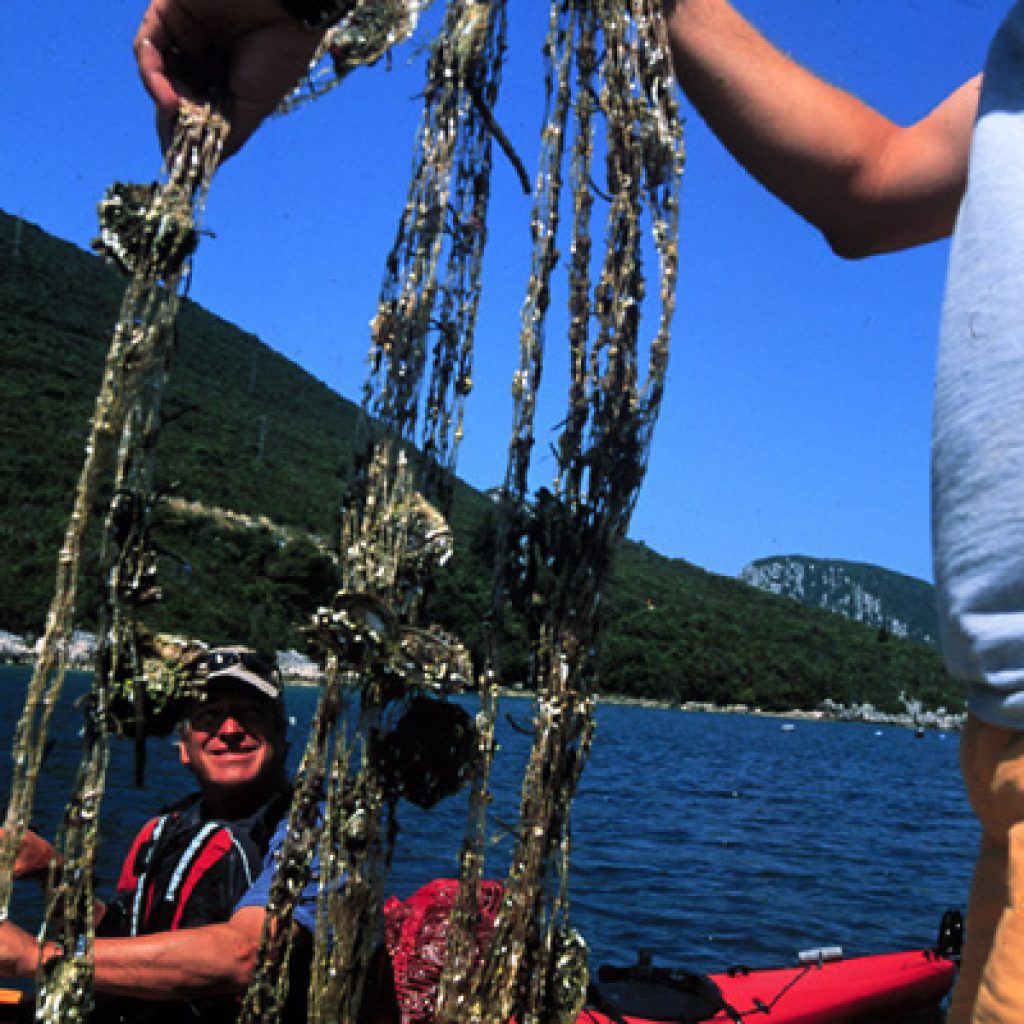
Almost four-fifths of Yugoslavia’s coast lay within Croatia and the entire coastline was rife with fighting during the early years of the 1990s, over-crowded with refugees from the interior desperate to get out of the way of the war. Tourist hotels became home to year-round populations of immigrants; island populations swelled, mostly with children sent to be with relatives – or strangers – by anxious mainland parents.
Today, Croatia’s interior is still marred by bombed and abandoned villages, never to be rebuilt or reoccupied. Along the coastline – the country’s tourist-base – everything has been rebuilt, from the napalmed town of Ston to the elegant Dubrovnik, which suffered perhaps the worst bombing of the war. The hotels which were not so long ago filled with refugees are again packed …with tourists.
There have been many big days in Stipe’s life. The first Croat to climb Everest (in 1979), having already summited K2 and Annapurna, he again topped Everest in 1985. But for him, one day stands out: Feb 20, 1992. On that wintry day he was in the mountains 35 miles from his home. He’d volunteered a year before to help guide his fellow Croat irregulars through the mountains where he’d climbed since he was a boy, and on that day he was shot.
“My first feeling was shame, embarrassment. There was blood everywhere and all I could think was, ‘I can’t believe this happened. TO ME!’ “
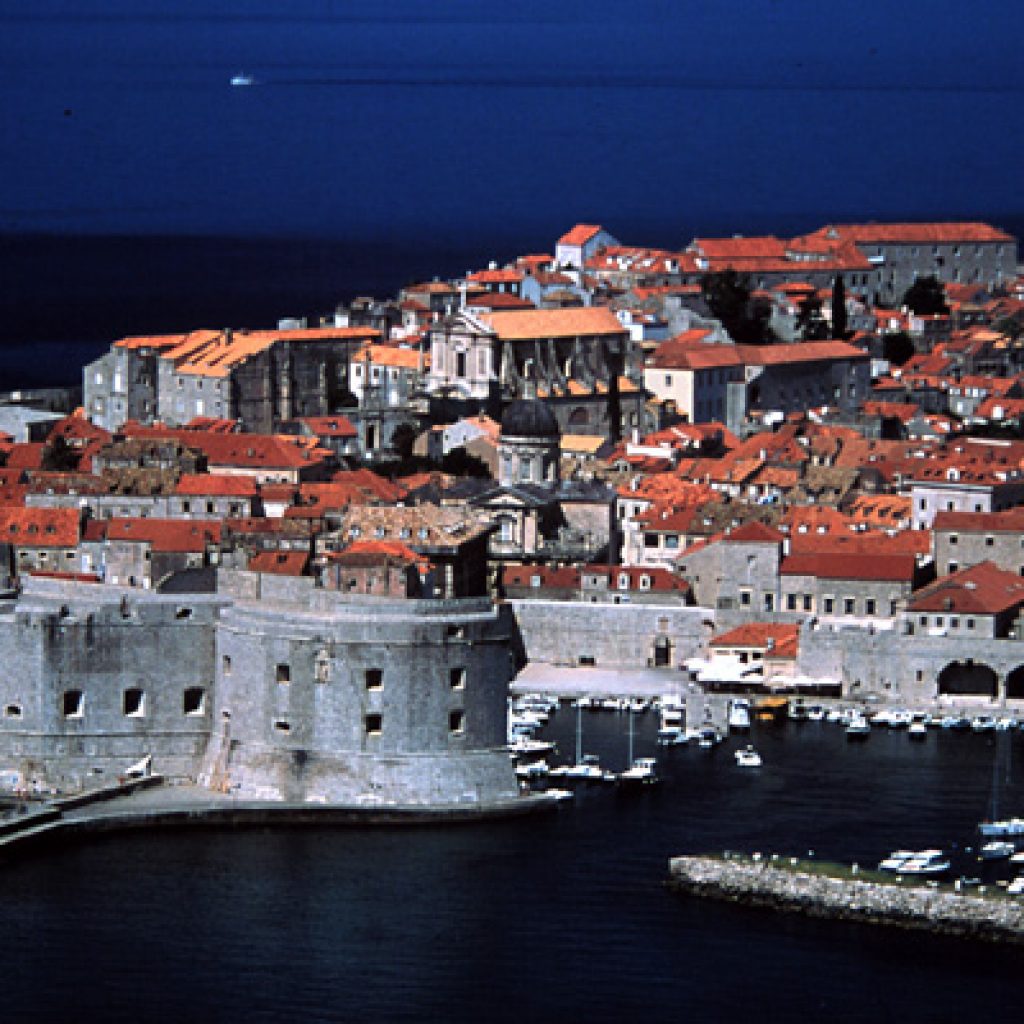
Not just shot, but shot 4 times. Left shoulder. Right pinky finger. Right leg. The last shattered the frame of his bulletproof vest. “It should have hit me right in the heart,” he points.
It was 10 hours to the nearest friendly house and he walked, his arm in a sling. A much more badly wounded friend – shot three times in the leg – was carried in an improvised stretcher. This is where Stipe’s knowledge of the mountains came in handy. “I wanted to be their guide, I felt it was my obligation.”
After six months of recuperating at home in Split, watching the continuing war on television, he accepted an invitation to climb in the Himalayas. “At first I said, How can I go climbing now? And then I thought, why not. I am ALIVE!”
he island of Vis – the most remote, populated island off the coast — was off-limits to tourists for decades, when it was Tito’s military headquarters. Military reminders are everywhere, from the 300-yard-long cement tunnels carved into the side of the island (where they hid destroyers and submarines during World War II), to the stone sentinel shacks we can see from our kayaks.
Getting to Vis from the island of Hvar, a 17-mile open ocean crossing across is … challenging. The jugo winds out of the south are behind us, pushing us, mixing with a strong current from the south and west, creating big, unpredictable chop. It is like paddling through a giant plate of moving, mashed potatoes. The sea churns everywhere at once, four-to-five troughs gaping and yawing in front, behind and on every side, all with a 20-knot wind blowing. On days like this you pretty quickly develop a strong kink in your left shoulder from constantly looking over it for incoming waves. At one point I look over and Pete is side-surfing the top of a six-footer, on the verge of going for a swim. He is definitely not smiling.
There are as many words in Croatian for wind as Eskimos have for snow: Tramontana, Bura, Lavant, Jugo, Ostro, Pulenat, Lebic, Maestral and more. Each comes from a different direction, sometimes arriving simultaneously, overlapping. Before coming to Croatia we had been warned repeatedly about the jugo, the wind from the south, and the bura, the powerful wind that blows off the continent and has been known to whip up a heavy seaborne mist so dense it has drowned boaters. Before there was Yugoslavia or Croatia, in the days of the Dubrovnik Republic, during the long weeks of the jugo it was agreed by all that no contracts could be signed, and that lesser punishments be meted out for crimes … because everyone knew the jugo made people unpredictable, irrational … crazy.
By the time we pull into Komiza, on the far side of the island, we are about driven mad by the winds ourselves. Everything we attempt in the next couple days is stymied by the winds. We are especially eager to paddle across to Bisovo, and into the sunlit Blue Cave we’d seen on tourist posters since arriving. The last time we set out for Bisovo we met a Zodiac driver coming back to shore. “It is crazy out there, you are crazy to go,” he shouted over the wind, so we turned around.
Paddling back to shore we spot a small sunken boat lying in the shallows, in 10 feet of water. Our assumption is that it somehow got off its buoy and sank, probably somehow related to this incessant wind!
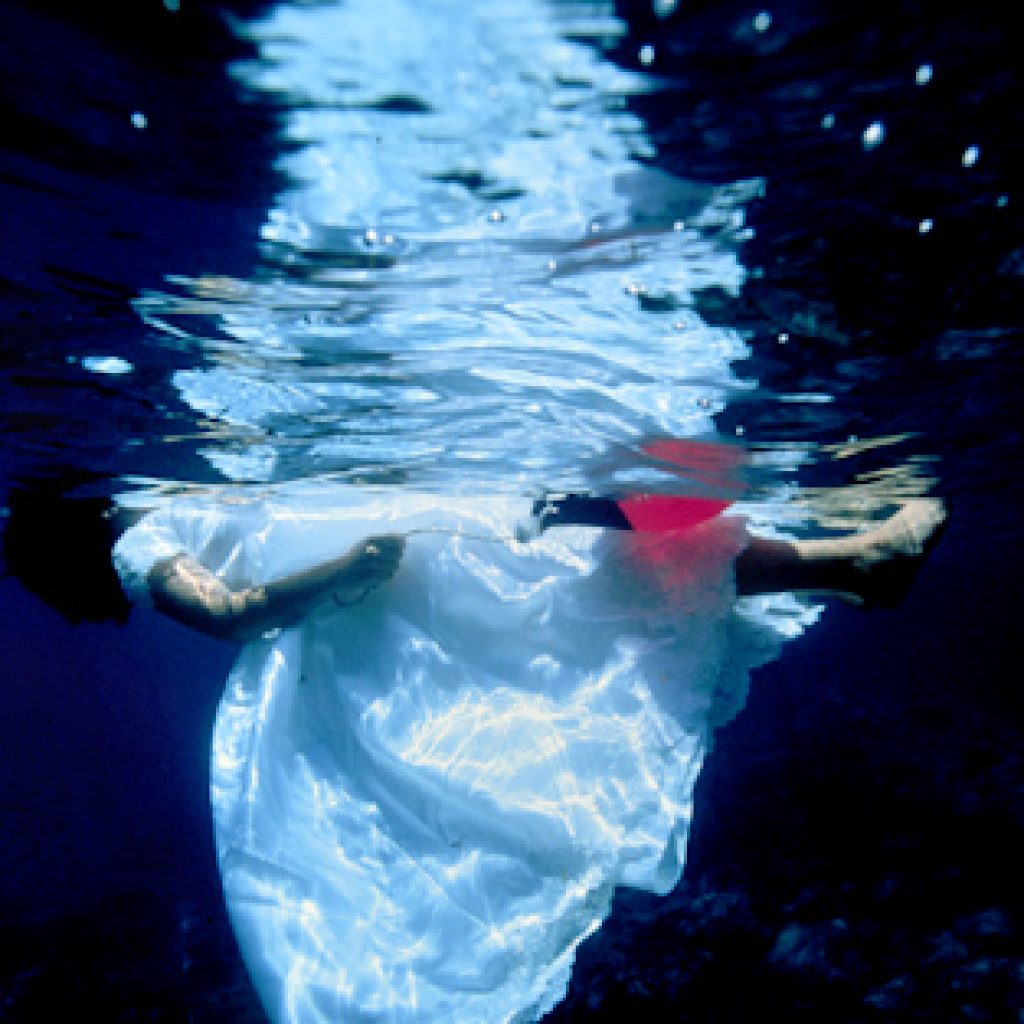
As we paddle above it, a tall man in jean shorts calls out to us from the shore. “Can you help us?” Apparently it is his boat and he is wondering if we will hook a rope to it and help him, via paddling and swimming, drag it to shore. From where we float it seems slightly Quixotic, but what the hell …
What follows is an afternoon of hilarity and bonding. Assembled on shore is a motley crew of fisher-guys, most of whom seem to spend their days doing anything but fishing. In cut-off shorts and tank tops, many armed with liters of lukewarm beer, their organization exists mostly of arguing with each other about the best way to drag this heavy, soaked boat onto the sand. (Our initial thought — that the boat sank by accident — was mistaken. In fact, they had sunk it on purpose, to allow the boards of the leaking boat to expand and swell.)
The gang leader is a burly man with a Santa Claus beard, nicknamed “Fire”. As we work together, with ropes and winches and kayaks and boards, to drag the boat towards the sand, an inch at a time, it is Fire who barks out the orders, runs to make sure the knots are tight, commands the movement of 4x4s placed beneath the boat. To a man, each pulls us aside to brag about Fire’s fishing expertise. “He’s the best on the island,” they each say, “A truly great fisherman!” Working out of a boat not much bigger than he, his reputation is for always—always — catching fish.
He is one of the lucky ones. We have met many fisherman throughout the islands who tell us the fishing is awful, blaming the Italians, Croatians, Japanese, Americans. (They also blame the Serbs, who at war’s end allegedly dropped bombs filled with poison – napalm? – into the sea to dispose of the evidence). There are fish in the Adriatic, but almost everything caught is sold to Japanese processing boats, to satisfy a huge sushi market back home. Everyone agrees that over-fishing, an inadequate fishing fleet and a lack of infrastructure to transport and process seafood has left Croatia unable to meet the demand that a burgeoning tourist industry has placed on a dwindling supply. As evidence, in a restaurant on Sipan we pay $80 — $80!!! –for a white fish caught just offshore. An ostrich steak on the same menu is $15. Some of the fish on Croatian tourist menus this summer comes from as far away as … the U.S.
After a couple hours, and many time outs for consultation, argument and more beer, the boat is successfully beached. As a reward we are invited into the cool shade of an ancient alleyway for bread and cheese and … more beer. As we cool our heels on the paving tiles smoothed by 1,000 years of foot traffic, I ask Fire how he got his nickname.
“Wouldn’t something like ‘Big Tuna’ or ‘King of the Sea’ be more appropriate?” I wonder.
He laughs. Fire is short for Firewater. “I’ve caught millions of fish and drank millions of pivos (beers), chased by who knows how many millions of brandies and whiskies. But I like ‘King of the Sea.’ I have earned the title!”
our-plus weeks into our adventure and we’ve experienced a wide variety of climates, including the coldest June days in 60 years, the biggest winds since, well, since last year, and lots of meltingly hot days. Finally, by the time we are paddling alongside the Peljesac Peninsula, heading towards the historic town of Ston and the Elefiti Islands which will lead us to Dubrovnik, we have finally settled into true Mediterranean lifestyle. On the water by mid-morning, off by noon, siesta until late afternoon, a big part of our days is spent hiding out from the sun and heat.
When we turn a corner on the sea and get our first glimpse of the beautiful walled city of Dubrovnik – on the last Sunday of June — Alex lets out with a burst from the “Messiah.” (Hallelujah! Hallelujah!) It’s been a beautiful, long, hot trip moving camp each day from island to island. We’ve slept on boat docks, pebbled beaches, amidst a group of naturists, beneath a variety of fishing boats and under the shade of centuries-old monastery walls. We are looking forward to the cool, worn paving stones of the big city … and some clean sheets!
Rising straight up from the sea, in a sense it was Dubrovnik that saved Croatia. Its walls – one hundred feet high, twenty feet thick, multitiered and studded with towers – defended the city against threats from the land and sea from 1991-1995, even though 150 were killed and 900 wounded under heavy shelling. The destruction to what is arguably Europe’s most beautiful city was extensive but restoration was fast, since this is the country’s #1 tourist destination. Today it is hard to see the patchwork, the repairs, unless you really look for it. Which seems true of its people too.
A few weeks into our travels, on the island of Korcula, Pete had remarked about the people we were meeting. “You know how when you dive into the sea, the surface is warm and then just below, it all of a sudden gets very cold. That’s kind of how I’m feeling. Like they are very warm on the surface, but there is a coldness lurking just below.” Most likely a remnant of suspicion and hatred leftover from the still-very-fresh war.
Throughout the islands we came across remarkably close-knit communities, and individuals with great family pride. In Sali, Bozidar Puhov, director of the Telascica National Park, is the guardian of lands where his family has lived for 400 years. Miljenko “Peter” Kisic, a raconteur/fisherman/tour boat operator we met first in Sipan, then again in Dubrovnik, lives in the same house his family has lived in the past 500 years. On the island of Vrgade, Tonci Toric showed us the 16th century house that has been in his family for four generations. He and his wife, Mirna, postponed their wedding until the end of the fighting, until 1994, despite that they’d already had their first child. “We wanted to wait until we really had something to celebrate,” she explained. When they finally got married, the entire town of 200 turned out in the old square for cake and wine and dancing and wine and singing and wine.
As we paddle into the marina of Dubrovnik, a white sandy beach and café straight ahead, my mind races back through all the people we’ve met. My favorite was in Komiza, where we’d thrown in with Fire and his gang. As we paddled towards shore that windy day I watched the most unusual scene unfold from the seat of my kayak.
On the edge of the seawall a raven-haired woman wearing a flowing white wedding dress tested the Adriatic with one toe, gingerly. Clutching a bouquet of flowers in one hand, a big orange buoy in the other … she threw herself into the sea …
This was on one of those windy days that we had been told could drive people mad. What was this throwaway bride up to? Wedding ritual? Baptisim? Suicide?
She floated in the water for 10 minutes, then swam back to the seawall. Kayaking alongside her I asked, pointedly, What the hell was that all about?
An hour later, in dry clothes, her hair still damp, we had coffee and Rita Varga explained she was a performance artist, from Hungary. The video and photos from this day – and others posed around the islands of Croatia, where she would similarly be throwing herself into the sea, even inside one of Tito’s long caves – were fodder for an upcoming exhibition. Her inspiration? Shakespeare’s Ophelia who, of course, drowns. “But my Ophelia does not drown,” she explains. “She is a survivor!”
Like Croatia, I proposed. A true survivor.